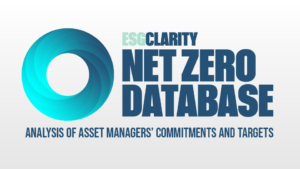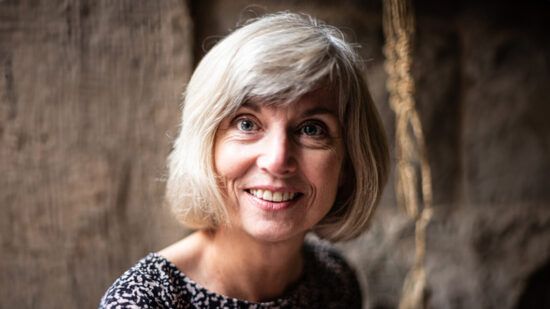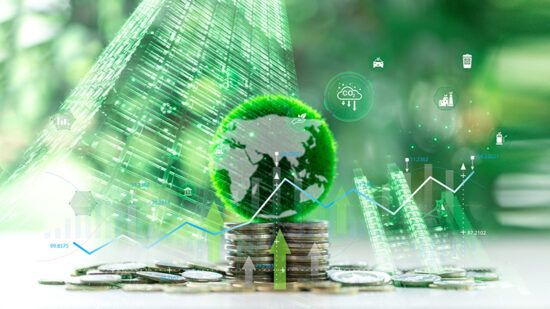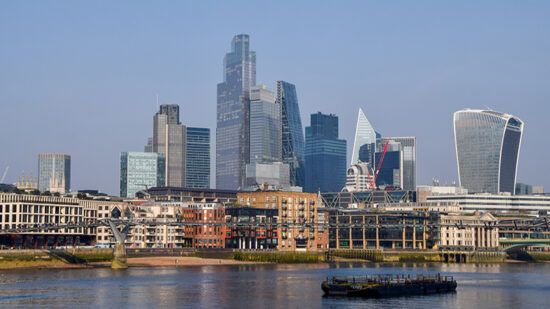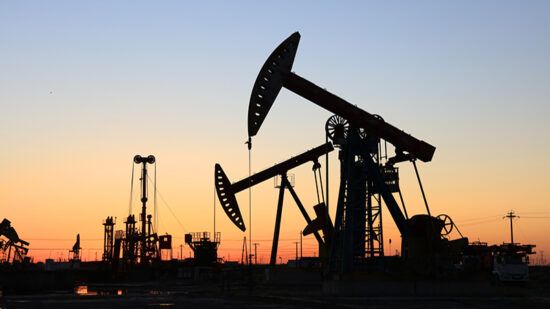In this Green Dream video interview, Thomas Morris-Brown, portfolio specialist at Impax Asset Management, discusses the firm’s environmental markets strategy, from opportunities and investment frameworks to measuring the impact of those investments.
He also shares his thoughts on engagement, and whether exploring environmental markets naturally leads to such a fund being active in its approach, or whether it’s possible to be a passive investor in this space.
Watch the full video interview above and read the transcript below.
MN: Hello and welcome back to the Green Dreams video series. My name is Michael Nelson, and today I have with me Tom Morris Brown, portfolio specialist at Impax Asset Management. Thank you for coming along today.
TMB: Pleasure to be here.
MN: And so, mostly today we’re going to be talking about environmental markets. To start with, what factors are driving opportunities in those markets at the minute?
TMB: Sure. So, I think it’s worth providing a bit of context about how we see environmental markets. So for us, specifically on the Impax Environmental Markets trust, we’re looking to invest in companies which are doing one of two things. Either it’s the cleaner, more efficient delivery of basic resources – so things like energy, water, food – or companies that are addressing environmental issues, such as pollution, climate change, waste. And we invest in those companies because we think that over the long-term, they should be able to deliver faster or higher earnings growth in the broader market over the long-term.
Now, in terms of what’s been driving those markets in recent months, years and what’s kind of going to be driving them, sort of over the next few months? I think it’s fair to say that we’ve seen valuations across environmental markets pull back quite sharply. Partly that’s a result of higher interest rates, growth companies selling off. We’ve also seen a change in what the market is after in terms of sustainable investments, something that was very exciting – the market got, I think it’s fair to say, a bit excited about during the pandemic – macro changes have changed that, whether it’s the war in Ukraine, whether it’s the cost of living crisis, has meant that valuations across that space have come back.
Now, longer term, we think that the factors which have made that space really exciting and interesting remain in place, whether it’s government regulation, fiscal stimulus, consumer changes in sentiment, all those factors remain in place. It’s just that we have now reached a point whereby valuations are perhaps a little more in touch with fundamentals. So, we think the long-term picture looks really strong. We’ve got valuations which are attractive, and from a technological perspective there’s still lots of really exciting innovation taking place in that space.
MN: On that, then, do you see that curve starting to go up again in terms of interest?
TMB: So, we haven’t actually seen that much impact from our existing clients. The clients that we have got invested in the trust remain pretty committed, so that’s something that we have definitely been beneficiaries of, because they buy into the long term trend. I think the marginal investor is, perhaps on the investment side, waiting for a change in the macro. So, interest rates continue to be affected because as a trust, we skew towards growth but also mid- and small-cap stocks. But from a sustainable perspective, I think for us it’s not really been a material consideration.
The people that buy into the thesis of faster earnings growth in the environmental markets continue to see that playing out. I think what we’ve seen go away, perhaps, is some of that more frothy, faster moving money, where actually sustainability, they weren’t really into it as an investment thesis so much as this is a market dynamics that they were looking to benefit from in the short-term. I think the longer-term, higher conviction investors, they remain pretty committed to the space.
MN: That sounds pretty positive, then. And so, what in your opinion is the best way to create the framework needed to invest in environmental markets? And what are the most crucial considerations?
TMB: Yeah. So, we have a standard investment process across Impax Asset Management’s equity strategies. So, there’s four steps. There is the idea generation. There is the investment analysis, so the ten step process, what we call. Then we will look at the investment committee, and once the stock has been proposed and agreed on, it will make its way onto the shortlist. And after that it’s portfolio construction and engagement, you know, making sure that the portfolio is well run.
Now, I think the framework that is most important to that really comes in at the idea generation stage, and that is what helps define our investable universe. Now, within the Impax Environmental Markets Trust, we are looking for mid- and small-cap companies, primarily with at least 50% of their revenues from what I mentioned earlier, these environmental markets. Now, how do we define those environmental markets? Well, we use a classification system which we call, somewhat grandiosely, the environmental markets taxonomy. And that basically has six sectors spanning things like energy, water, waste, food, transport and digital infrastructure. And we use that classification system to boil down the entire investable universe to a range of about 1500 companies with about a nine trillion market cap, all of which derive at least 50% of their revenues from environmental markets.
After that, it’s our investment team’s job. So, this is about 50 people across the firm whose sole job it is to look at this universe, find stocks that are interesting from a financial fundamentals perspective. And it’s that combination of focus on environmental solutions with good old fashioned bottom up analysis that really means that we think we’ve got a strong framework from which to construct portfolios.
MN: And I know we’ve already previously spoken about these not necessarily being impact funds, but how do you go about measuring the impact of your investments in this space?
TMB: Yeah. So, I think that’s a really important distinction to make. The companies that we own, they have products and services which generate an impact, and our funds or the trust has an impact as a result of those.
The impact that we have as portfolio managers is when we engage with management, when we speak to them and when we act as a as a free and friendly consultant to try and help them along in their sustainability journey. So, how we measure that, on the environmental footprint side of things, it’s stuff like CO2 emissions, water consumption, energy intensity, all the sort of usual stuff that you would expect.
I think where we go above and beyond, perhaps, and where we take a slightly differentiated approach, is that because we know the companies we invest in, a lot of them are industrial companies. A lot of them produce things. We don’t just look at the Scope 1, Scope 2 emissions of a company. We will also look at the emissions that are saved, or not produced, by using their products. So, the easiest example I can think of is something like a renewable energy company. Yes, there are emissions in the production of, say, an offshore wind turbine – it’s construction, it’s maintenance. But, if you look at what actually using that resource saves in terms of emissions, you get a much fuller picture of the impact of your investment. So, that’s how we like to think of it in the round.
MN: As a quick aside, would that be is that the definition of Scope 4?
TMB: That’s an area that, you know, we aren’t looking at yet. But I think again, it’s, you know, what you might consider a Scope 4.
MN: We’ve spoke about it not being impact necessarily, but it’s, given the nature of investing in nature markets, does that force you to be more active in your approach in terms of stewardship, or is it possible to create a fund like this and be passive?
TMB: So, we’re definitely active in the sense of engaging with our companies. We do that, again, for a number of reasons. The first is, again, comes back to investment risk. We’re looking at ESG concerns because we think, like any other sort of fundamental factor, they will influence our understanding of the investment.
So, a classic one for us at the moment, or one that keeps coming up, is how exposed is a company’s actual business operations to climate change risk? If this is a production facility that is in an area that could be at risk of wildfires or flooding, has the company made appropriate arrangements to mitigate for that to ensure that it’s not exposed, and we will engage with company management to talk about that. So, engaging with companies from an investment risk perspective, tremendously important. And there’s probably not a meeting that goes by now where we don’t do that.
The other side of our engagement activity is, I guess, as a as a free and friendly consultant. As I said earlier, making sure that these companies can use us as a sounding board to improve their management of environmental, social and governance factors. So, that would be things like, say you’re a technology company producing, as we’ve got in the portfolio, CAD software. You’re extremely reliant on intelligent, highly skilled employees, retaining those employees, having the human capital management policies in place that will keep them there, keeping them happy. That’s really important for them. So, they will come to us and discuss, you know, what are you seeing as best practice? What are your ideas? And that’s something that will help the business get better. And ultimately, should we translate it through to the chairperson?
MN: And then as usual, the wrap up question, what is your favourite sustainable snack or drink?
TMB: I don’t know if this is a cop out, but certainly for me there’s nothing more sustainable than growing your own fruit and veg, and right now we’ve got a bumper crop of raspberries, and it’s really nice coming home after a long day at work or I’ve been to pick up the kids, and just grabbing a load of raspberries before you go. And just naturally growing in my garden.
MN: Sounds perfect. Thank you very much for coming in, it’s been a pleasure chatting with you.
TMB: Pleasure, Michael.


